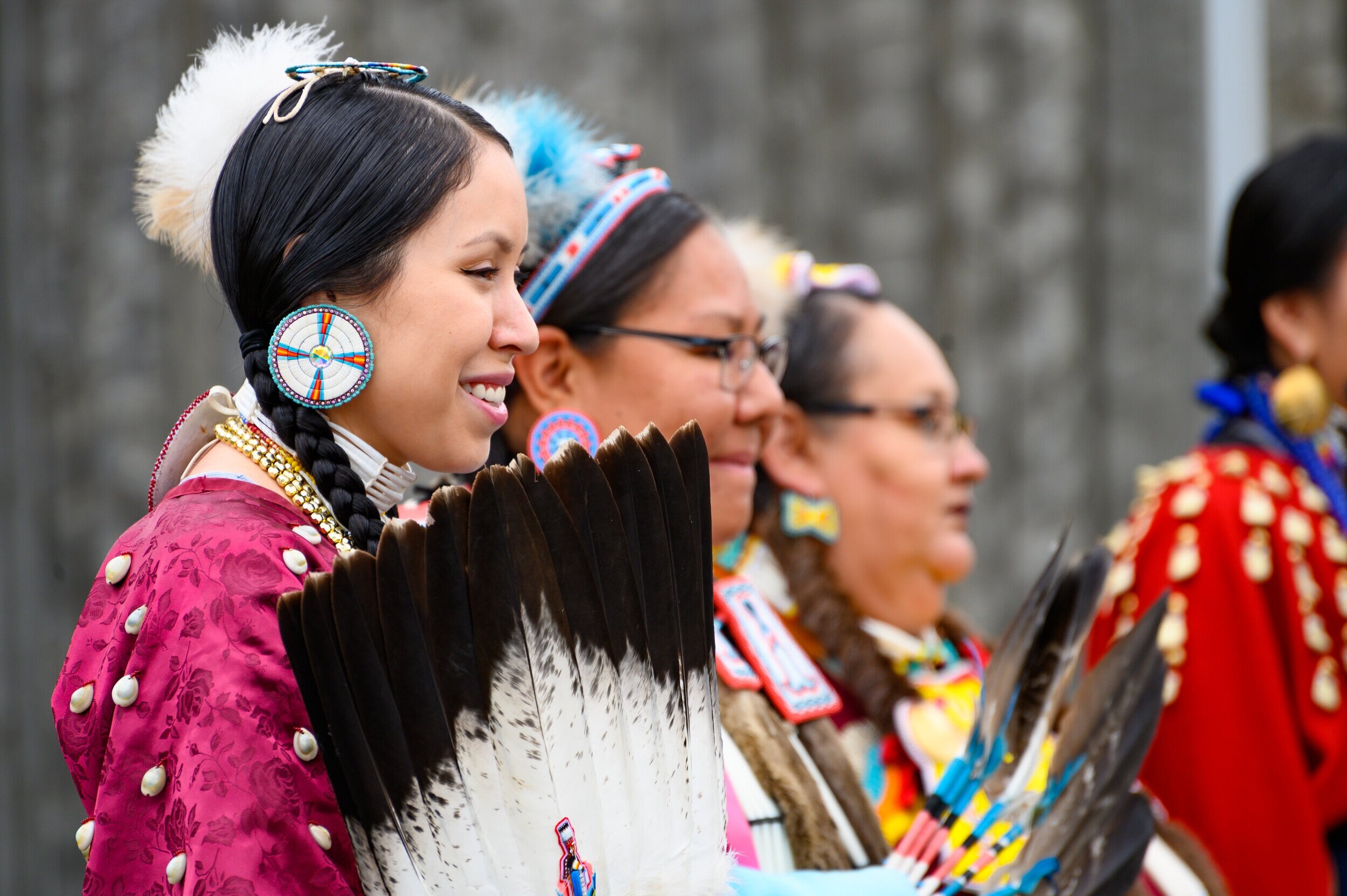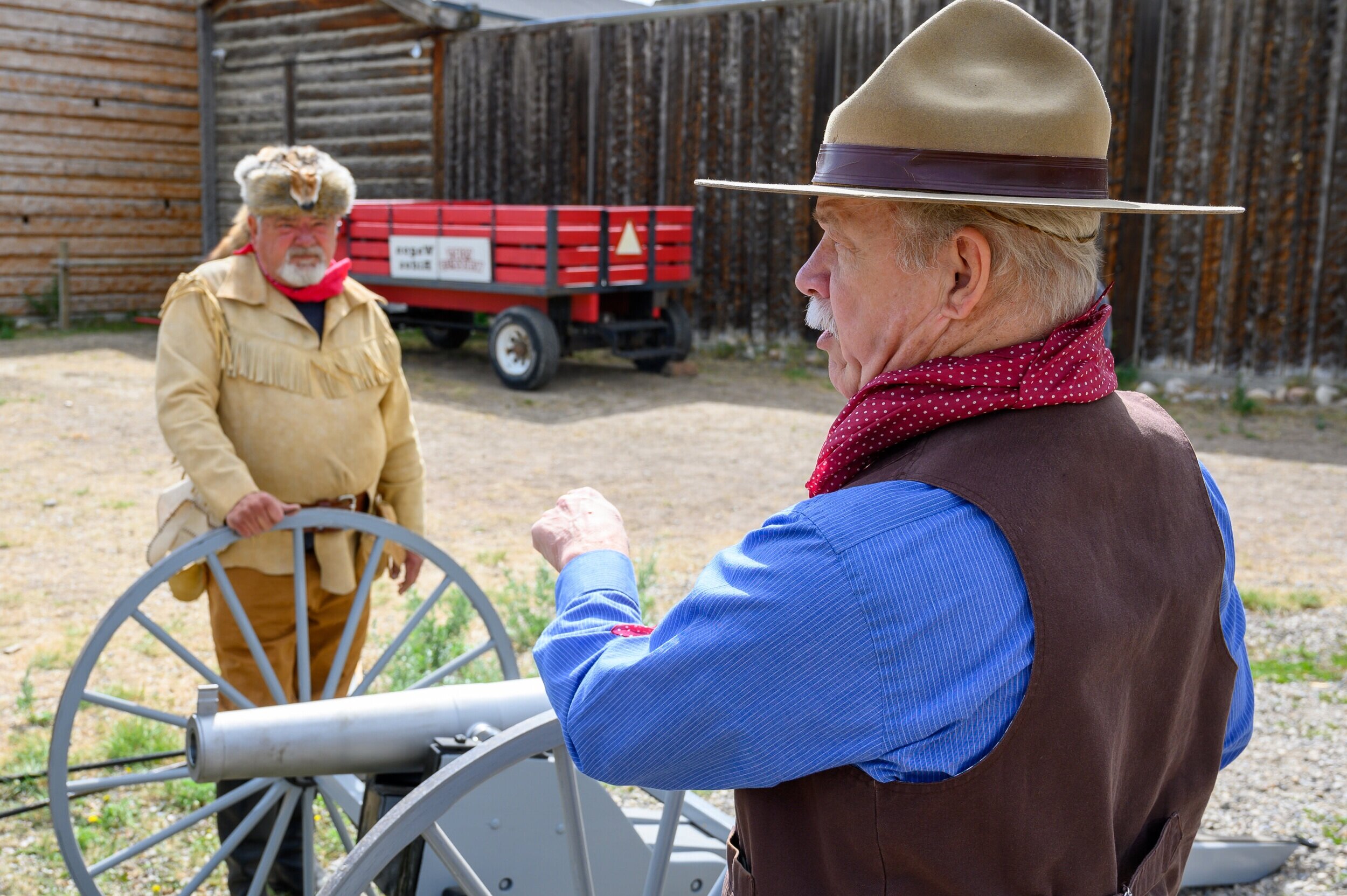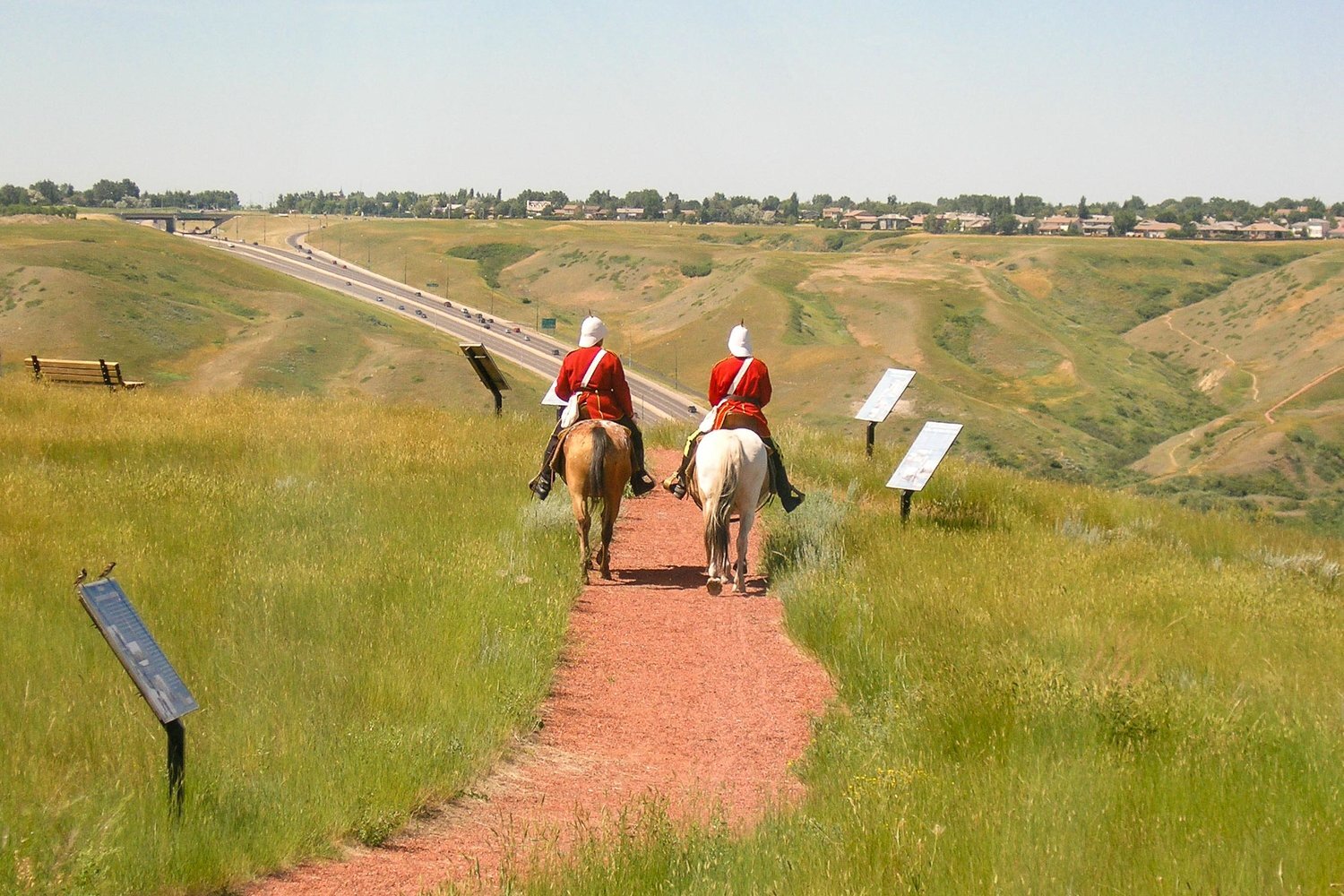Trade fort
1. No double posting. If you have seen it in the group, do not try asking it to be posted again. (this … ещё pertains to if it is done within a day of the original posting) 13.
Best forex bonuses
Trolls will be booted. This also applies to people who steal pictures from other group members profiles. That is not tolerated at all. Immediate block and ban.
����������consider this your warning. You will be muted/blocked/ banned if rules are not followed.����������
rules:
1. No double posting. If you have seen it in the group, do not try asking it to be posted again. (this … ещё pertains to if it is done within a day of the original posting)
2. Post the price for what you are selling, or your post will be deleted. After your item has sold delete the post.
3. Do not post anything illegal (YOU WILL BE BLOCKED)
4. No gofundmes unless approved by admin teams(this includes posts asking for help.)
5. No click bait/scams (we can only do so much, bear with me in this process) tag a admin in a suspected spam post so we can delete if need be.
6. No political posting.(this keeps the community both friendly and happy as many people have different views/beliefs)
7. No racial slurs in comments/ racial comments towards people/or their sexuality. (you will be banned) no movements such as isis/hate groups ect. To be brought up in any sort of posting/ commentary.(this will result in a ban)
8. Sexual postings are not for this group, nor are any posts pertaining to violent/ graphic nature be it real life or in video games.
9. No bashing if you have an issue with anyone about how they are commenting on a post, message a mod with the posts link, and we will deal with the issue.
10. Got a small business or car lot of cars you want to sell? Advertise monday is here! Every monday a thread will be created where you are allowed ONE link to your stuff you have for sale. Pages will be checked and deleted if they are not following the previous rules.
11. Any posts from spam sites will be deleted you are blocked immediately no questions asked. Any people you have invited to the group get no access to the group.
12. If you sell a high dollar item please meet at a well lit area with plenty people around. If you buy a phone meet at a cellular store to get it checked and confirm it works before you pay.
13. Trolls will be booted. This also applies to people who steal pictures from other group members profiles. That is not tolerated at all. Immediate block and ban.
14. No private messaging and harassing other members. If they say you can message them then that is fine but unless you get their consent it will result in a immediate block and ban.
ASI show fort worth
18. - 19. May 2021 | international trade fair for promotional products
On the ASI show are national and international exhibitors presenting their latest products from the advertising industry. Many buyers and sales staff are informed about trends and innovations in the industry. Honoured interested parties, due to the effects of the corona virus, the fair will be postponed to this new date.
The ASI show will take place on 2 days from tuesday, 18. May to wednesday, 19. May 2021 in fort worth.
Audience:
professional visitors only
Cycle:
annually
Local time:
04:46 h (UTC -06:00)
Due to the corona pandemic (COVID-19), information about trade fairs and events may be out of date. You can get more information from the organizer.
Fair location:
Hotels
For trade fair date in fort worth
Fair location:
Hotels
For trade fair date in fort worth
Downtown fort worth: 0.23 km in a straight line
Product groups: calendars, lighters, pens, promotional gifts, stationery, …
Industry sectors: advertising, marketing, promotional products, …
Disclaimer: no responsibility is taken for the correctness of this information. Errors and alterations excepted! Fair dates and exhibition sites are subject to change by the respective trade fair organiser.
Pictures
Upload a picture from your booth on the ASI show or other fair impressions!
Trade show suppliers
© 2008-2021 sima media gmbh | texts, images, graphics and the design of this website are protected by copyright. Any use beyond the narrow limits of copyright law is not permitted without consent. Abuse will be admonished without warning. The logos and trade names shown are registered trademarks and therefore property of the respective companies. Changes and errors excepted! Changes of exhibition dates or places are reserved to the respective trade fair organizer. All statements without guarantee.
Trade schools in fort collins
Fort collins, colorado, a city just a few hours north of denver, is surrounded by lakes, mountains and forested areas. Just a few hours away from the pristine wilderness of wyoming, the city is central to many outdoor recreational activities.
Not only is there space to relax, but some of the fastest-growing industries and top industries are located in fort collins.
Top industries and employers in fort collins
Some of the top industries in the fort collins area include:
- Education
- Accommodation and food services
- Professional, scientific and technical services
- Health care
- Construction
- Administrative and support services
- Waste management
- Public administration
With those top industries comes some of the highest-paying careers from these top employers:
- Uchealth
- Broadcom
- Woodward
- Otterbox
- Employment solutions personnel services
- Tolmar
- Hewlett packard enterprise
The top ten highest-paying careers in fort collins are:
- Physicians and surgeons
- Chief executives
- Surgeons
- Dentists
- Family and general practitioners
- Marketing managers
- Lawyers
- Architectural and engineering managers
- Financial managers
- Computer and information systems managers
Fort collins is home to big-name brands and high-tech companies that have relocated to the city due to its strong manufacturing industry.
List of trade and vocational schools in fort collins
Aside from being a fast-growing city with access to an abundance of outdoor activities, there are a handful of vocational schools in fort collins:
- IBMC college
- Northern colorado truck driving academy
- Healing arts institute
- Hair dynamics education center
- Institute of business and medical careers
In addition to trade schools in fort collins, the state offers the colorado FIRST program, which is a job training program that is customizable and available for new or current employees in permanent, non-seasonal positions.
Companies that participate in a qualified job training program, or those who participate in a "school-to-work" program, may be eligible for tax credits for their training investment. Qualified job training can come from eligible community colleges or universities, as well as employment and training centers in the region.
With a focus on employee development and a variety of well-known companies to work for, fort collins is an excellent place for vocational students to spend time on their degree programs before figuring out their next steps. For more insight, learn about trade schools in colorado.
Colleges & trade schools in fort worth, TX
By crystal lee
| published january 19, 2021
| last updated january 19, 2021
Colleges and trade schools in fort worth, texas, offer streamlined programs for reliable and appealing occupations. They enable students like you to expand their job-relevant skills and prepare for new opportunities in a city that continues to generate bright career prospects.
Find a college near me
Education & training in fort worth
Industry information
Career information
Education & training in fort worth
There are compelling reasons for prospective students to choose a university, college, or trade school in fort worth.
Key benefits of the area for college students
- A more relaxed atmosphere: fort worth still has a positive small-town vibe for a relatively large city. Compared to neighboring dallas, fort worth is often described as being more laid-back.
- Fewer issues with traffic: tarrant county has only one of texas' 40 most congested roads.
- A greater sense of security: in fort worth, the rate of violent crime per 100,000 residents is lower than in dallas, houston, or san antonio.
Costs
Your educational costs will vary depending on the fort worth institution you attend and the specific program you choose. But you can get a general idea of what to expect from data USA estimates of the median tuition among four-year schools in the dallas-fort worth-arlington metro area:
- Public schools: $7,396 (in-state); $17,652 (out-of-state)
- Private schools: $16,471
Trade school accreditation
You must attend a school that is nationally or regionally accredited if you're hoping to benefit from federal financial aid.
The accrediting commission of career schools and colleges and the southern association of colleges and schools commission on colleges are just two examples of ED-recognized accrediting agencies for schools in texas.
Private post-secondary institutions also require state authorization or approval.
Financial aid for fort worth students
Students throughout texas may be eligible for grants, scholarships, and other types of aid from either the state or federal governments.
You can explore local scholarship offerings from organizations like the north texas community foundation or the fort worth hispanic chamber of commerce.
Faqs about being a student in fort worth
How affordable is off-campus housing in fort worth?
According to census data, apartments in fort worth cost slightly less than in the larger dallas-fort worth-arlington metro area. The median monthly rent for a studio apartment in fort worth is $902, compared to the metro-area median of $1,020. For a one-bedroom place, the median is $945 in fort worth versus $1,035 in the broader metro area.
Are there any special deals on public transit in fort worth?
All tarrant county residents can use trinity metro's bus, commuter rail, or ridesharing services for free if they are traveling to a job fair or interview. You will need to show a text, email, or flyer that confirms your event's date.
Plus, tarrant county college students qualify for free use of buses and trains with their student ids.
What other resources can be beneficial for area residents?
The fort worth public library offers online access to books, newspapers, and research databases. You can also explore digital career planning resources.
Several organizations are dedicated to promoting professional development and civic engagement among young people in fort worth. Here are a few examples you may want to consider getting involved with:
Featured schools
Remington college
- Database management and administration
- Dental assisting
- Digital graphic art
- Facility maintenance
- Facility maintenance and technology
- Heating, ventilation, & air conditioning
- Medical assisting
- Medical assisting with X-ray tech (limited scope)
- Medical office administration
- Restaurant, hospitality, and retail management
Universal technical institute
Industry information
Fort worth has a diverse mix of industries that are expanding or having a significant impact on the region's success.
Fastest-growing industries
Between 2018 and 2028, the following industries are expected to see the fastest rates of job growth in tarrant county, according to the texas workforce commission (TWC).
Educational support services (66.5%): A significant increase in demand is projected for non-teaching professionals who contribute to the education system, such as guidance counselors and exchange program administrators.
Religious organizations (54%): churches, temples, and other establishments that promote faith-based ideals are expected to expand enormously in the coming years.
Support activities for rail transportation (43.6%): workers who operate terminals, service rail cars, or load and unload cargo should see greater demand for their services.
Non-depository credit intermediation (43.3%): this growing sub-sector includes firms that provide credit or lend funds raised through the credit market rather than from depositors.
Outpatient care centers (41.5%): specialized fort worth facilities that offer services like family planning and substance abuse counseling will need more professionals with relevant expertise.
Careers related to the industries above
average annual wages
Other key industries
Fort worth's economic progress is also driven by sectors such as:
Transportation and warehousing: fort worth has two airports with a global reach, a network of interstates, and BNSF railway's headquarters. A TIP strategies report notes that close to 11 percent of fort worth workers have jobs related to material moving.
Manufacturing: many companies in fort worth are engaged in making fighter jets, helicopters, automotive components, pharmaceuticals, and more. The TIP strategies report reveals that this sector supports roughly seven percent of jobs in the city.
Life sciences: A CBRE report recognized the dallas-fort worth area as one of the top emerging centers for the life sciences industry, based on metrics like employment growth and funding from the national institutes of health.
Hospitality and tourism: according to visit fort worth, close to nine million people visit the city each year. Its tourism industry accounts for more than 22,000 jobs.
Careers related to the industries above
average annual wages
Career information
Fort worth is expected to see above-average employment expansion over the next few years. Some of the most promising fields to be a part of include health care, business, and education.
Fort worth snapshot
Job growth
(tarrant county)
14.6% from 2018 to 2028
Job openings
yearly average
(tarrant county)
Average salary*
(all occupations)
Population
(city)
Number of employers
(tarrant county)
Key industries
Transportation and warehousing, manufacturing, life sciences, hospitality and tourism
- Texas workforce commission
- U.S. Bureau of labor statistics
- U.S. Census bureau
Fastest-growing careers
According to TWC projections for tarrant county, the occupations listed below should have the greatest employment growth rates from 2018 to 2028. Unless otherwise noted, wages are drawn from bureau of labor statistics (BLS) data for the dallas-fort worth-arlington metro area.*
Music directors and composers (43.5%): create original songs or coordinate the performance of a group of musicians. Conductor positions usually require a master's degree.
- Average yearly wage: $68,380
Occupational therapy assistants (43.2%): help patients develop or regain the skills they need to independently carry out tasks related to work, school, or daily life. To meet the licensing requirements of the executive council of physical therapy and occupational therapy examiners (ECPTOTE), you must complete an associate degree and pass both a state and national exam.
- Average yearly wage: $68,360
Physical therapist assistants (40.4%): help injured patients improve their physical movement and manage their pain. Successful completion of an associate degree and the national physical therapy exam is required for licensure from the ECPTOTE.
- Average yearly wage: $68,680 (statewide)
Personal care aides (40%): make daily life more manageable for people with disabilities or other impairments by providing help with tasks like cooking, cleaning, and getting to appointments. You can get started in this field with a high school diploma.
- Average yearly wage: $21,520
Physician assistants (40%): collaborate with a doctor as a key member of a health care team. Before you can get the required state license, you must complete an approved graduate-level program.
- Average yearly wage: $102,400
Good-paying careers with the most yearly job openings
Every year, plenty of positions become available in the fort worth region that pay more than the metro-area average. However, you'll need college-level training to qualify for them. Below are five of the top examples, based on TWC projections for tarrant county and BLS wage estimates for dallas-fort worth-arlington.*
General and operations managers (1,594 yearly openings): set organizational policies, direct the use of materials, and coordinate staff activities. It normally takes a bachelor's degree and a few years of experience to get to this level.
- Average yearly wage: $134,340
Registered nurses (1,591 yearly openings): have a direct impact on the well-being of medical patients. Becoming licensed in texas involves completing a state-approved program and passing a couple of exams.
- Average yearly wage: $76,740
Elementary school teachers (964 yearly openings): support academic and social skill development in young learners. The road to state licensure begins with completing a bachelor's degree.
- Average yearly wage: $58,340
Accountants and auditors (842 yearly openings): keep tabs on an individual or organization's financial health and make sure all documentation is maintained in line with government regulations. Most positions call for a bachelor's degree or higher.
- Average yearly wage: $82,480
Business operations specialists (754 yearly openings): assist businesses with specialized tasks like developing disaster recovery plans, moving goods over international borders, conducting energy audits, or selling goods online. A bachelor's degree is good preparation.
- Average yearly wage: $84,420
Move ahead with your aspirations at a trade school
Fort worth is a city where the possibilities for success keep expanding. By enrolling in career-directed programs at colleges and trade schools in fort worth, TX, adults like you can get on the path to a more fulfilling future.
* salary information is based on bureau of labor statistics (BLS) data for the dallas-fort worth-arlington metropolitan area, including tarrant, dallas, denton, collin, ellis, hunt, hood, johnson, kaufman, somervell, rockwall, parker, and wise counties.
Fort union's fur trade origins
The american fur company expands onto the upper missouri
John jacob astor’s american fur company (AFC) built fort union trading post to make money from the plethora of pelts, robes, and other furs to be taken from beaver, bison (or buffalo), and other animals in the northern rocky mountains. England’s hudson’s bay company (HBC) operating to the north, in canada, could not ship pelts, furs, and trade goods on the south-flowing missouri river through spanish, french, and, after 1803, american territory initially explored in 1804–1806 by meriwether lewis and william clark. That circumstance created a competitive opportunity for american fur traders.
Soon after 1828, fort union dominated the upper missouri fur trade. The post’s founding bourgeois, or manager, AFC partner kenneth mckenzie, solidified that dominance after 1832. That summer, mckenzie brought the first steamboat to fort union, a transportation innovation that revolutionized the fur trade. Transportation costs lower than the HBC’s meant the upper missouri outfit, as the AFC’s western department was called, could pay more for furs than its canadian competitor. With this advantage, the UMO convinced potential trading partners among the blackfeet to trade with fort union instead of the HBC.
Smithsonian american art museum. Gift of mrs. Joseph harrison, jr. 1985.66.407
Other upper missouri peoples traveled to fort union to trade, too. The assiniboine, crow, cree, mandan, arikara, hidatsa, and lakota, as well as free traders, brought furs and foodstuffs to fort union to exchange for imported manufactured goods such as calico fabrics, clothing, trade blankets, manufactured metal goods—kettles, knifes, iron points—, tobacco, glass beads, and firearms. For many upper missouri peoples, especially women, manufactured trade goods like kettles offered convenient and desirable alternatives to traditional tools and equipment. In return, the tribes supplied the tanned pelts and furs american and european consumers demanded. They also helped provide provisions for the trade post, especially food.
Today, fort union’s legacies—and they are many—include the good, bad, and unforeseen. They are a testament to both human ingenuity and limitations: sage business acumen, entrepreneurship, and the devastating consequences of technological innovation and unanticipated variability in supply and demand as well as the environment. Fort union and the AFC for a time succeeded in creating and supplying the demand for furs; in business, they out-competed their american and HBC rivals.
That competition cost everyone, however, the traders and their american indian trading partners. The fur trade succeeded so grandly that the upper missouri peoples and traders exhausted their supply of pelts and furs. The traders in the process introduced and, often unwittingly, spread diseases like smallpox that decimated their american indian trading partners’ societies and lifeways. These effects, made possible with the tribes’ complicity, subsequently dispossessed the upper missouri peoples of their lands and game-dependent ways of life. It’s a story that still needs to be told. It’s one the tribes themselves need to be invited to share.
Its national significance
As occurred in north dakota, so too across america. Women especially invested time and money to protect and preserve local and nationally significant historic sites the likes of george washington’s virginia residence, mount vernon. Even congress acted in 1935, when on august 21 it passed the historic sites act.
Canadian history/the whiskey traders and the NWMP
During the 1870's there were many independent companies trading whiskey to the native peoples of the southwest part of the north-west territories. This led to widespread alcoholism among the native peoples, which eventually caused poverty, disease, malnutrition, and death. In 1873, the canadian government formed the north-west mounted police in an effort to reduce the use of alcohol as a trading currency. By 1874, the NWMP accomplished their task of removing the whiskey traders from canada, forcing them to flee across the border to the united states.
The arrival of the whiskey traders [ edit ]
Aboriginals of north-west canada were eager to trade their furs for european tools, food, and weaponry. Trading between native peoples and the europeans became a large part of the history of canada and the exploration and settlement of the country.
In the mid-1800's, american fur traders began to introduce native peoples to liquor, which had a devastating effect on their way of life. The whiskey traders traded strong, cheap liquor to the natives, and it benefited the traders greatly, allowing them to make better deals on trade. However, it caused malnutrition, poverty, and disease among the natives.
Many forts, such as the infamous fort whoop-up, were established around the southern canadian plains, and the traders began to illegally trade whiskey to native peoples. The canadian government formed the north-west mounted police in an effort to prevent the use of whiskey in trading with natives.
The formation of the NWMP [ edit ]
In 1873, the north-west mounted police were formed to protect the native peoples from the whiskey traders.
On july 8th, 1874, 300 men marched west from fort garry, manitoba. They endured hard times in the western lands of canada, as they were low on equipment and supplied with incorrect maps. Low on supplies, commissioner george french and assistant commissioner james macleod reached fort benton, and visited the fort to stock up on supplies. While visiting the fort, they were also introduced to jerry potts, whom they hired as a guide.
With guidance from potts, the group reached fort whoop-up, which was searched and found to have no alcohol. After leaving the fort, they traveled further west, and established a permanent fort, fort macleod, on the oldman river.
What is fort whoop-up?
Fort whoop-up is a replica of an original fur trading fort built in the late 1800s. We tell the story of the buffalo robe and illegal whisky trade, the years leading up to and the years that followed.
We tell the story of this region and the people here from the mid-1860s to the early 1890s. It is a complex story that includes the niitsitapi (blackfoot), other first nations, métis, canadians, americans, and british. It is a story of trade and politics, good people and notorious characters, and the flow of time.

Niitsitapi (blackfoot)
Long before the arrival of the newcomers, naapi gambled in the mountains. He used a special song and was able to win all the black waters flowing down from the eastern slopes. This is kitaowahsinnoon, what sustains us. This is what we call our blackfoot territory. It encompasses everything from the north saskatchewan river here in alberta, to the yellowstone river in wyoming, and from the rocky mountains far east to the great sand hills in saskatchewan. Other tribes belong to different waters, but this is our place, and it's been that way for thousands of years.
During certain seasons, especially in the summer, our way of life involved being on the move, A'pawaawahkao'p. There were places we went to hunt buffalo, and others where we got elk. There were special places abundant in berries, and lakes where we could easily harvest waterfowl eggs.
Everywhere we moved was for a purpose, and we would camp in the same areas every year. We would mark these locations with rings of stone, momma'pis.
With the arrival and settlement of newcomers in the 1860s the traditional way of life of the niitsitapi – the siksika, kainai, piikani, and amskapi pikuni nations – changed.

American traders
After the US civil war ended in 1865, young men flooded into montana in search of gold and other ventures. Settlement expanded into the newly created montana territory.
Canada joined in confederation in 1867, and western canada—the “northwest territories” as it was then known—was transferred to the young dominion; however, the government had no real presence in the west.
An american law made it illegal to sell or trade alcohol in montana’s “indian country,” but alcohol was widely used as an incentive for trade with indigenous people. When the hudson’s bay company and the american fur company withdrew from trade in the late 1860s, free traders stepped in. Beyond the reach of the law, the canadian prairies were filled with opportunity for gold prospectors, wolfers and whisky traders.

Construction
In december 1869 alfred B. Hamilton and john J. Healy obtained supplies from fort benton, montana and headed north. They set up a trading post at the meeting of the st. Mary and belly (now oldman) rivers. A traditional gathering site for the bands of the blackfoot confederacy, the site would become the centre of a booming commercial trading post system.
Fort hamilton was a simple structure with six rooms. Healy and hamilton made huge profits in their first season, but their fort was badly damaged in a fire. Healy and hamilton decided to build a larger and more permanent fort. They hired a former hudson’s bay company carpenter, william gladstone, to build the new fort with a crew of about forty, mostly métis, men.
Fort whoop-up, as it became known, was built with squared cottonwood logs, and was designed for defense. It was enclosed by a palisade with a heavy oak gate, bastions, high windows and bars over the chimneys. It was also equipped with a rifle cannon on wheels and a smoothbore cannon. Buildings faced inward to an open central square. There was a kitchen, trading room, blacksmith shop, living quarters, stabling for the horses, a well and cellars.

Operations
Buffalo robes were the main trade commodity. Robes were sold in eastern markets as sleigh blankets or coats, while the hides made excellent belts for industrial machines. The robes were shipped east by steamboat on the upper missouri river. At the peak of the robe trade, up to 75,000 robes passed through fort benton, montana each year. Most of the trade was done in winter months, when the buffalo robes were thickest. A whole “head and tail” robe was worth about $12 in trade goods, and a split robe was worth half that. First nations’ demand for certain types and quality of goods sharpened competition among traders.
Buffalo robes, deerskins, wolf pelts, and other furs were exchanged for firearms, utensils, blankets, tobacco, flour and other provisions. The most profitable trade good was whisky, which was kept in a large barrel and dispensed by the jug or cupful. One to two liters of whisky traded for one robe. This “fire water,” as it was often called, was diluted with water, and might contain anything from chewing tobacco, to burnt sugar, tea or ink to add flavour and colour.

North-west mounted police
News of healy and hamilton’s rich profits drew other traders from montana. The trail from fort benton to fort whoop-up became a major route for bull trains carrying freight north and buffalo robes south. Soon there were more than fifty trading posts in what is now southern alberta with names like slide out, standoff, kipp and robbers’ roost. Fort whoop-up was the largest and most notorious of them all. The traders were often described as crude opportunists, desperadoes and hard cases—but several went on to become respected businessmen and politicians. While few of the traders became rich, merchants such as T. C. Power and I. G. Baker built large fortunes supplying the robe trade.
Reports of devastation made their way to ottawa. In 1873, prime minister macdonald announced the formation of the north-west mounted police (NWMP) to bring canadian authority to the west and to close down the whisky trade.
On hearing of the mounted police’s approach, some traders fled to montana or reinvented themselves as legitimate traders. Hamilton left fort whoop-up in 1873, though healy stayed on for three more years. Near the end of their trek west, the NWMP hired a respected guide named jerry potts who led them to fort whoop-up on october 9, 1874. But instead of a rowdy whisky trade, they found the fort nearly abandoned, with no whisky in sight.
The troops established their headquarters at fort macleod. From there they patrolled the region and set up additional forts and outposts. The north-west mounted police became respected by first nations and feared by traders. By the end of 1875, they had brought the whisky trade under control.

A time of change
In july 1876, john healy sold fort whoop-up to the resident manager, dave akers.
Over the next five years the great buffalo herds were decimated all across the plains as a result of commercial hunting. By 1881 the robe trade was finished.
Akers turned to market gardening, and rented space in the fort to the north-west mounted police. During akers’ time there, fort whoop-up was also a stopping point for stagecoach and mail service from fort benton. In 1893 akers was killed by a former business partner over a long-standing argument. His death marked the end of an era.
The whisky trade had brought tremendous change to niitsitapi social and cultural life, but it was only the beginning. Already struggling with epidemics like smallpox and tuberculosis, the blackfoot people were devastated by the loss of the buffalo. The tsuu T’ina, stoney/nakoda and sik ksi kai tsi tapi nations signed treaty 7 in 1877. Soon they were settled on reserves and receiving government rations. Despite ongoing challenges, the blackfoot people in southern alberta were resilient and are vibrant nations with a strong traditional culture.
The landscape was also transformed in the 1890s. Railways replaced bull trains, stagecoaches and river steamboats. The trains carried settlers, who in turn established farming, irrigation and permanent towns. Since that time, the original site of fort whoop-up has slowly been eroded by the changing flow of the oldman river.
On october 28, 1963, the original site of fort whoop-up at the junction of the st. Mary and oldman rivers was declared a national historic site of canada. In 1967 a reconstruction of the fort was created in indian battle park. The replica was redeveloped in the 1980s. Today, the fort whoop-up facility continues to tell the complex story of the brief but formative period of the buffalo robe and whisky trade in southern alberta.
We invite visitors here at fort whoop-up to learn some of our history, language and culture. Kitohkanaiksimatsimohpinnaan. We greet you all.
Trade post
Please help with verifying or updating older sections of this article.
At least some were last verified for version 3.0.
Trade posts are income-generating holdings that do not count toward a ruler's demesne limit. They can be built by merchant republics in coastal provinces (including provinces they do not own). With the horse lords or jade dragon DLC, they can also be built by local rulers along the silk road or the trans-saharan trade route.
Contiguous trade posts with the same patrician owner create trade zones. Large rich trade zones boost the income of their trade posts, along with the income of cities in the zone's provinces. Control of sea zones can increase the number of contiguous trade posts in a patrician's trade zone. In order for a patrician to control a sea zone he must have more trade posts connected to that zone than any other patrician.
Contents
- 1 merchant republic trade posts
- 1.1 base stats
- 1.2 requirements
- 1.3 upgrades
- 1.4 trade post limit
- 2 silk road trade posts
- 2.1 silk road buildings
- 3 trans-saharan trade route trade posts
- 3.1 trans-saharan trade route buildings
- 4 references
Merchant republic trade posts [ edit ]
Each patrician can build a limited number of trade posts based upon the size of his family palace, the number of dynastic men he has in his court, and the level of trade practices technology in the republic's capital (not the patrician's capital, should the two be different).
Merchant republic trade posts have a base cost of 150 wealth to build and take 12 months. The cost is increased by 30% times the distance to the closest settlement controlled by the builder of the trade post. (for landless patricians, the distance is calculated from the location of their court, which is usually the republic's capital.) the distance is calculated by sea unless the province is adjacent. The cost is also modified by 40% times the province's top liege's opinion of the builder. When built trade posts must be connected by sea to your capital so if the capital is in venice, trade posts cannot be built in the indian ocean.
Republics with a trade post in a county have a 'seize city' CB on the local city, subject to various constraints.
Feudal rulers with trade posts in their land receive an embargo casus belli on the republic, which if successful will raze the trade posts within their borders for a handsome payout. Rulers also have random event chains to attempt to destroy a trade post within their demesne or to demand a bribe from the post's family. Additionally, one merchant republic can offer monetary inducements to a kingdom or empire to embargo another republic. One merchant republic can not own a trade post in territory controlled by a rival merchant republic, such trade posts will be removed without any notification.
Base stats [ edit ]
Requirements [ edit ]
All merchant republic trade post [1] building lines share the same basic requirements as described below.
| Building | level 1 | level 2 | level 3 |
|---|---|---|---|
| cost | 100 | 150 | 200 |
| construction time | 182 | 274 | 365 |
| lot requirements | building level 1 | building level 2 |
Upgrades [ edit ]
Trade post limit [ edit ]
The trade post limit of a given patrician is calculated using the following formula:
- The result of the above formula is rounded (.5 is rounded up).
- "palace bonus" is determined by the number of extra trade posts granted by the main building upgrade in a patrician's family palace (+0, +3, +6, +9 respectively).
- The trade practices technology bonus is a multiplier with the following values at each level: -0.667/-0.333/0.00/0.10/0.20/0.30/0.40/0.50
Example: a patrician with level 4 in trade practices in the republic's capital, a grand palace (level IV upgrade), 3 sons, 1 brother and no other living unlanded adult male family member is expected to have (1+9+4)*1.10=15.4 i.E. 15 trading posts.
Silk road trade posts [ edit ]
The horse lords or jade dragon dlcs allow any ruler to build trade posts at specific provinces along the silk road land route between china and europe. Silk road trade posts can be owned by either the owner of a province or a patrician, and cost 50 gold to build.
The silk road is visible in the economy and trade zone map modes. If a silk road province is occupied or is being sieged during a war, the value of trade flowing through the province will be reduced by 10% if under siege and 25% for occupation. Both the trade zone controlled by the province owner and the total trade value along the entire route affect income.
Note that even without trade posts, silk road provinces receive passive boosts to taxes from castles, cities and temples.
Silk road buildings [ edit ]
Coastal silk road provinces which are considered important locations can have both standard trade post buildings and silk road buildings, if their owner is a merchant republic. Note that the radhanite buildings will disappear if their owner ceases to meet the requirements.
| Name | price | build time | effects | requirements |
|---|---|---|---|---|
| silk road trading post | 200 | 150 | +1 trade route wealth, +30 trade value | trade practices 1 |
| silk road market | 400 | 300 | +2 trade route wealth, +50 trade value, +1 fort level | silk road trading post, trade practices 2 |
| major silk road city | 800 | 600 | +4 trade route wealth, +70 trade value, +1 fort level | silk road market, trade practices 4 |
| trade offices 1 | 200 | 600 | +25% tech spread rate, +0.25 monthly prestige, +50 retinue size | trade practices 1 |
| trade offices 2 | 600 | 600 | +0.5 monthly prestige, +100 retinue size | trade offices 1, trade practices 2 |
| trade offices 3 | 1200 | 600 | +1.75 monthly prestige, +150 retinue size | trade offices 2, trade practices 4 |
| mercenary garrison 1 | 200 | 600 | +300% garrison size, +5 trade value | trade practices 1 |
| mercenary garrison 2 | 400 | 600 | +300% garrison size, +10 trade value, +1 fort level | mercenary garrison 1, trade practices 2 |
| mercenary garrison 3 | 600 | 600 | +300% garrison size, +15 trade value, +1 fort level | mercenary garrison 2, trade practices 4 |
| radhanite quarter 1 | 150 | 400 | +10% garrison size, +5% tech spread rate, +10 trade value, +0.5 trade route wealth, +0.01 military tech points, +0.01 economic tech points, +0.01 cultural tech points | israelite culture group or jewish religion or khazar culture, trade practices 1 |
| radhanite quarter 2 | 250 | 600 | +20% garrison size, +10% tech spread rate, +20 trade value, +1 trade route wealth, +0.02 military tech points, +0.02 economic tech points, +0.02 cultural tech points | radhanite quarter 1, israelite culture group or jewish religion or khazar culture, trade practices 3 |
| radhanite quarter 3 | 350 | 800 | +30% garrison size, +15% tech spread rate, +40 trade value, +2 trade route wealth, +0.03 military tech points, +0.03 economic tech points, +0.03 cultural tech points | radhanite quarter 2, israelite culture group or jewish religion or khazar culture, trade practices 4 |
Trans-saharan trade route trade posts [ edit ]
Introduced in patch 3.0 alongside map changes to north and sub-saharan africa, these trade posts also require horse lords or jade dragon dlcs. They operate similarly to the silk road trade posts, but with some differences.
Like the silk road, the trans-saharan trade routes are visible in the economy and trade zone map modes. Occupation or siege also reduces the value of trade flowing through the province, by 10% and 25% respectively. Both the trade zone controlled by the province owner and the total trade value along the entire route affect income.
However, unlike the silk road, provinces do not receive as large a passive boost to taxes from castles, cities and temples. This means that the value of the trans-saharan trade route is largely found in trade post provinces, and among those, in provinces where special production buildings [2] can be constructed.
Trans-saharan trade route buildings [ edit ]
Like coastal silk road provinces, coastal trans-saharan trade route buildings can have both standard trade post buildings and trans-saharan trade route buildings, if their owner is a merchant republic. However, as the three coastal trans-saharan trade route provinces (anti-atlas, cebta, and tripolitana) lack the ability to build any trans-saharan production buildings, the difference is less pronounced as compared to the silk road provinces.
Notably, none of the trans-saharan trade route buildings add any garrison or fort level to the provinces. The trade post holdings must be protected by the main holdings of the province.
The most valuable of these provinces, the gold production provinces of bure and bambuk, will periodically give out gold to whomever owns them; the gold will eventually deplete, rendering the gold production buildings in the province inactive, and adding inflation modifiers to the province.
WINNER
#1 PLATFORM TECHNOLOGY
#1 CRYPTO TECHNOLOGY
At tradestation,
crypto is easy.
Access more markets from a single account
SOME THINGS GO
BETTER
TOGETHER
$0 commissions +
the power of tradestation
Trade commission-free* stocks, etfs, options, and futures with the award winning technology of tradestation
Have an equities margin account?
Lower your rate.
Increase your opportunities.
Move your debit balance today to access lower margin rates + commission-free trades*
Start planning for tomorrow.
Today.
Tradestation securities offers a variety of individual retirement accounts (iras) designed to help you take control of your retirement portfolio.
You trade it.
We have it.

Stocks


Options

Futures

Futures options

Crypto


Mutual funds
Build a solid trading plan with tradestation analytics
Access powerful trading tools without a brokerage account
Spend your time trading,
not wondering what it costs.
Take a fresh look at the simplified zero commissions pricing for stocks, options and futures.
Stocks
Options
Futures
- TS select and TS GO: available only to U.S. Residents. “commission-free” for equities trades applies only to the first 10,000 shares per trade — for each order of more than 10,000 shares, a $0.005 per share charge will be assessed on the number of shares in excess of 10,000. Direct-routed equity orders will be charged an additional $0.005 per share. There will be a $1.00 per contract fee for index options. Direct routing of options orders incurs an additional $1.00 per contract fee. Basic market data is available at no charge only to non-professional subscribers. Other market data fees may apply if you add markets.
- TS GO: TS GO rates apply only to mobile app and web trading. If you are on this plan and place trades using the tradestation desktop platform, an additional $10.00 fee will apply to each equities and options trade you make. For futures trades, a $1.40 surcharge per contract will apply. You can avoid these higher desktop fees by using the TS select price plan.
- Tradestation desktop platform: you must use the tradestation desktop platform to receive radarscreen, optionstation pro, portfolio maestro, tradestation scanner, easy language, strategy back-testing, the full matrix, and the ability to use tradingapp store products.
- Certain options strategies: there are additional costs associated with option strategies that call for multiple purchases and sales of options, such as spreads, straddles, and collars, as compared with a single option trade.
- Other fees and charges: service fees, market data fees, premium service fees and other fees and charges may apply. Please visit service fees section
Why tradestation?
New traders or seasoned professionals can experience the full suite of powerful trading technology, online brokerage services, and trading education all under one roof.

Platforms
Cutting edge trading technology that provides power, reliability, and mobility

Products

Customer service
Get the support when you need it

Pricing
Spend your time trading, not wondering what it costs

Learn
Market insights, education, and resources for new and seasoned traders

Accounts
Various account types tailored to your needs
Past performance, whether actual or indicated by historical tests of strategies, is no guarantee of future performance or success. There is a possibility that you may sustain a loss equal to or greater than your entire investment regardless of which asset class you trade (equities, options or futures); therefore, you should not invest or risk money that you cannot afford to lose. Online trading is not suitable for all investors. View the document titled characteristics and risks of standardized options. Before trading any asset class, customers must read the relevant risk disclosure statements on our other information page. System access and trade placement and execution may be delayed or fail due to market volatility and volume, quote delays, system and software errors, internet traffic, outages and other factors.
Equities, equities options, and commodity futures products and services are offered by tradestation securities, inc. (member NYSE, FINRA, CME and SIPC). Tradestation securities, inc.’s SIPC coverage is available only for securities, and for cash held in connection with the purchase or sale of securities, in equities and equities options accounts.
Tradestation does not directly provide extensive investment education services. However, useful investment and trading educational presentations and materials can be found on tradestation’s affiliate’s site, youcantrade.Com, which is owned by you can trade, inc., an investment education media company.
Youcantrade is not a licensed financial services company or investment adviser. Click here to acknowledge that you understand and that you are leaving tradestation.Com to go to youcantrade.
Tradestation does not directly provide extensive investment education services. However, useful investment and trading educational presentations and materials can be found on tradestation’s affiliate’s site, youcantrade.Com, which is owned by you can trade, inc., an investment education media company.
Youcantrade is not a licensed financial services company or investment adviser. Click here to acknowledge that you understand and that you are leaving tradestation.Com to go to youcantrade.
You are leaving tradestation securities, inc. And going to tradestation crypto, inc. Tradestation securities and tradestation crypto are separate companies.
You are leaving tradestation securities, inc. And going to tradestation crypto, inc. Tradestation securities and tradestation crypto are separate companies.
You are leaving tradestation.Com and going to tradestation technologies, inc.
You are leaving tradestation.Com and going to tradestation technologies, inc.
Tradestation securities, inc. Is an SEC-licensed broker dealer and a CFTC-licensed futures commission merchant (FCM), and a member of FINRA, SIPC, CME, NFA and several equities and futures exchanges, which offers to self-directed investors and traders equities accounts for stocks, exchange-traded products (such as etfs) and equity and index options, and futures accounts for commodity and financial futures and futures options (tradestation securities does not offer crypto accounts).
Tradestation crypto, inc. Is neither a securities broker dealer nor an FCM, and offers to self-directed investors and traders cryptocurrency brokerage services under federal and state money services business/money-transmitter and similar registrations and licenses (tradestation crypto is not a member of FINRA, SIPC, CME, NFA or any equities or futures exchange, and does not offer equities or futures accounts).
Tradestation technologies, inc. Is a software development company which offers analytics subscriptions that self-directed investors and traders can use to chart, analyze and design back-tested strategies for equities, options, futures, forex and crypto markets (tradestation technologies is not a financial services company).
You can trade, inc. Is an online educational, news and entertainment media publication service that seeks to provide to the public a marketplace of potentially actionable investment and trading content, ideas, demonstrations and informational tools. You can trade is not an investment, trading or financial adviser or pool, broker-dealer, futures commission merchant, investment research company, digital asset or cryptocurrency exchange or broker, or any other kind of financial or money services company, and does not give any investment, trading or financial advice, or research analyses or recommendations, or make any judgments, hold any opinions, or make any other recommendations, about whether you should purchase, sell, own or hold any security, futures contract or other derivative, or digital asset or digital asset derivative, or any class, category or sector of any of the foregoing, or whether you should make any allocation of your invested capital between or among any of the foregoing.
Tradestation crypto accepts only cryptocurrency deposits, and no cash (fiat currency) deposits, for account funding. In order for you to purchase cryptocurrencies using cash, or sell your cryptocurrencies for cash, in a tradestation crypto account, you must also have qualified for, and opened, a tradestation equities account with tradestation securities so that your cryptocurrency purchases may be paid for with cash withdrawals from, and your cryptocurrency cash sale proceeds may be deposited in, your tradestation securities equities account. Therefore, if you want to open a tradestation crypto account, you must also have an equities account with tradestation securities. This cash in your tradestation securities equities account may also, of course, be used for your equities and options trading with tradestation securities.
Tradestation and youcantrade account services, subscriptions and products are designed for speculative or active investors and traders, or those who are interested in becoming one. No offer or solicitation to buy or sell securities, securities derivative or futures products of any kind, cryptocurrencies or other digital assets, or any type of trading or investment advice, recommendation or strategy, is made, given or in any manner endorsed by any tradestation group company, and the information made available on or in any tradestation group company website or other publication or communication is not an offer or solicitation of any kind in any jurisdiction where such tradestation group company or affiliate is not authorized to do business. Past performance, whether actual or indicated by historical tests of strategies, is no guarantee of future performance or success. There is a possibility that you may sustain a loss equal to or greater than your entire investment regardless of which asset class you trade (equities, options, futures, futures options, or crypto); therefore, you should not invest or risk money that you cannot afford to lose. System access and trade placement and execution may be delayed or fail due to market volatility and volume, quote delays, system, platform and software errors or attacks, internet traffic, outages and other factors. The trademarks “tradestation®,” “youcantrade” and “shecantrade,” as well as other trademarks, domain names and other proprietary intellectual property of tradestation group companies, are owned by tradestation technologies. The proprietary tradestation platform is offered by tradestation securities for equities (including equity options) and futures trading. Tradestation crypto offers its online platform trading services, and tradestation securities offers futures options online platform trading services, through unaffiliated third-party platform applications and systems licensed to tradestation crypto and tradestation securities, respectively, which are permitted to be offered by those tradestation companies for use by their customers.
Please also read carefully the agreements, disclosures, disclaimers and assumptions of risk presented to you separately by tradestation securities, tradestation crypto, tradestation technologies, and you can trade on the tradestation group company site and the separate sites, portals and account or subscription application or sign-up processes of each of these tradestation group companies. They contain important information, rights and obligations, as well as important disclaimers and limitations of liability, and assumptions of risk, by you that will apply when you do business with these companies.
So, let's see, what we have: fort worth buy, sell, or trade (817): 99 953 участника. 🚨🚨🚨🛑🛑Consider this your warning. You will be muted/blocked/banned if rules are not followed.🛑🛑🚨🚨🚨... At trade fort
Contents of the article
- Best forex bonuses
- ASI show fort worth
- Fair location:
- Hotels
- Fair location:
- Hotels
- Pictures
- Trade show suppliers
- Trade schools in fort collins
- Top industries and employers in fort collins
- List of trade and vocational schools in fort...
- Colleges & trade schools in fort worth, TX
- Education & training in fort worth
- Key benefits of the area for college students
- Costs
- Trade school accreditation
- Financial aid for fort worth students
- Faqs about being a student in fort worth
- How affordable is off-campus housing in fort...
- Are there any special deals on public transit in...
- What other resources can be beneficial for area...
- Featured schools
- Industry information
- Career information
- Fort worth snapshot
- Job growth (tarrant...
- Job openingsyearly...
- Average salary*(all...
- Population(city)
- Number of employers(tarrant...
- Key industries
- Fastest-growing careers
- Good-paying careers with the most yearly job...
- Move ahead with your aspirations at a trade school
- Fort union's fur trade origins
- The american fur company expands onto the upper...
- Canadian history/the whiskey traders and the NWMP
- The arrival of the whiskey traders [ edit ]
- The formation of the NWMP [ edit ]
- What is fort whoop-up?
- Fort whoop-up is a replica of an original fur...
- Niitsitapi (blackfoot)
- American traders
- Construction
- Operations
- North-west mounted police
- A time of change
- Trade post
- Contents
- Merchant republic trade posts [ edit ]
- Silk road trade posts [ edit ]
- Trans-saharan trade route trade posts [ edit ]
- WINNER
- At tradestation, crypto is easy.
- SOME THINGS GO
- BETTER TOGETHER
- $0 commissions + the power of tradestation
- Have an equities margin account? Lower your...
- Start planning for tomorrow. Today.
- Access powerful trading tools without a brokerage...
- Stocks
- Options
- Futures
No comments:
Post a Comment
Note: Only a member of this blog may post a comment.